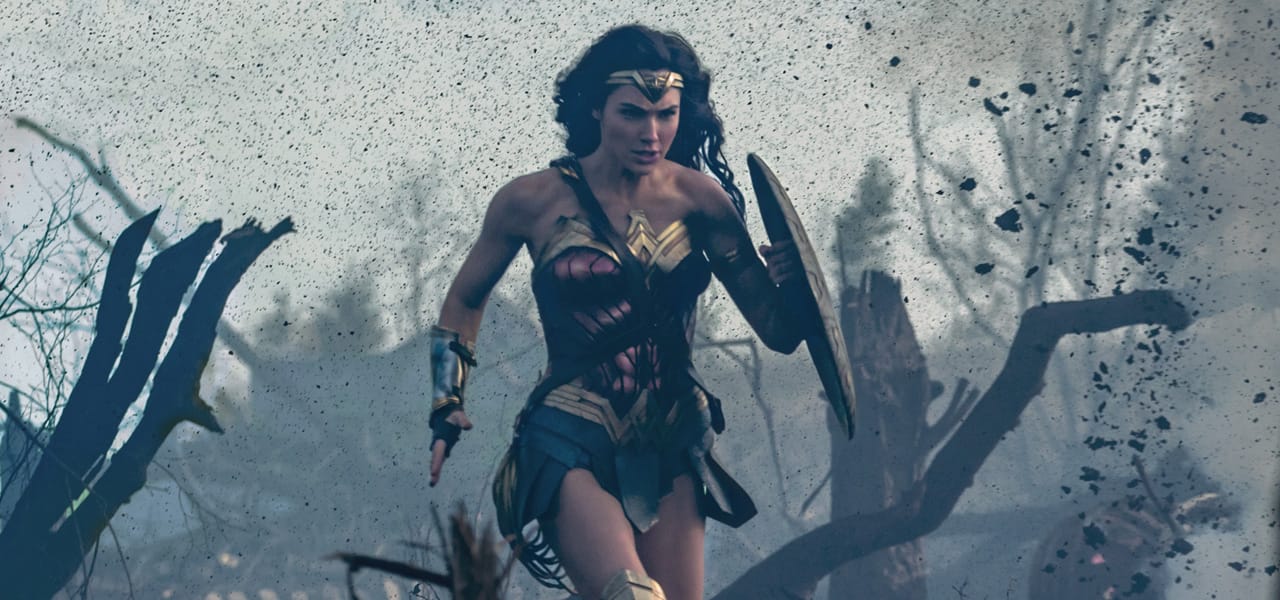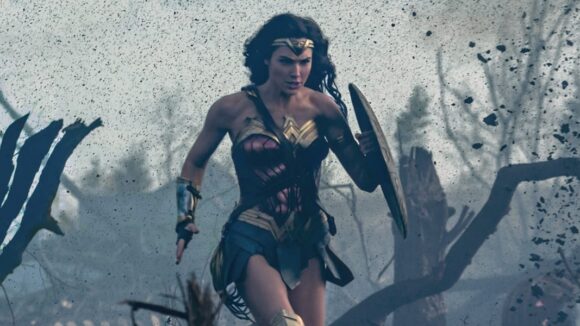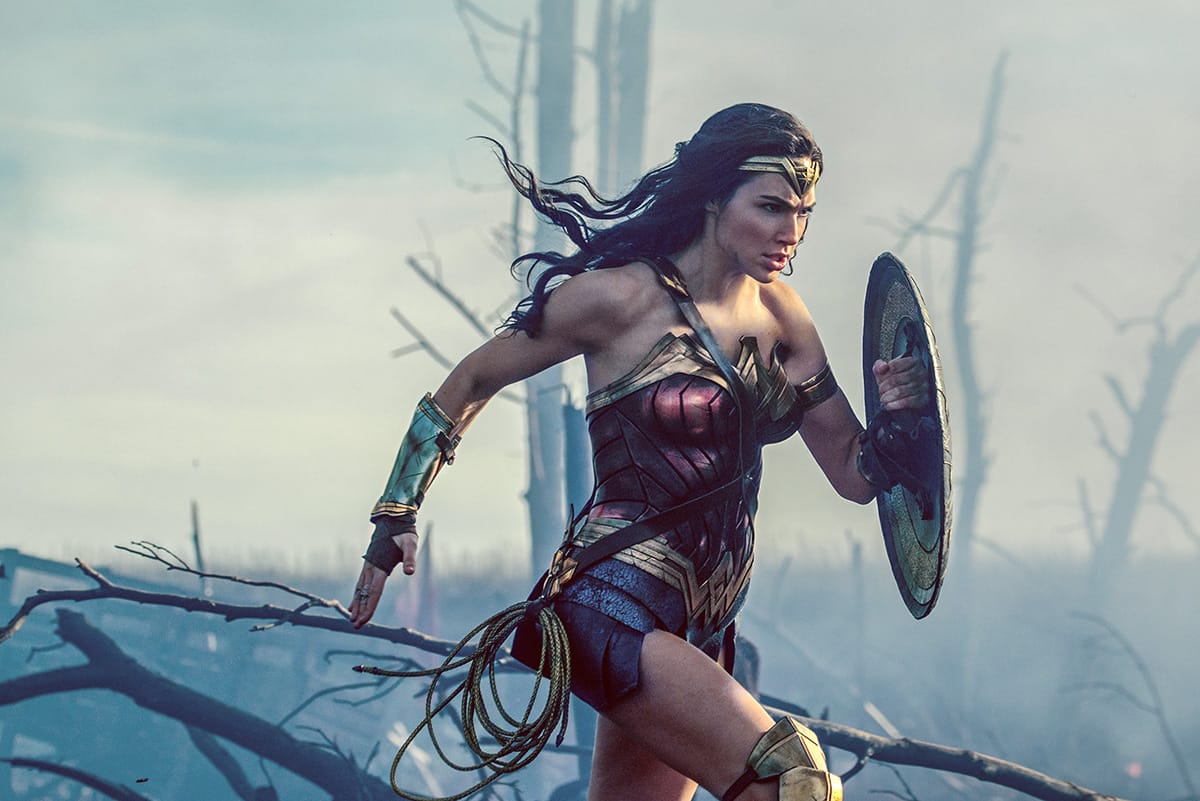

How They Did It: Making The War Scenes In ‘Wonder Woman’
As much as Patty Jenkins’ Wonder Woman is a comic book tale with grand scenes and superhero battles, it is also a very personal tale of discovery for its lead character, Diana Prince (Gal Gadot). That meant that, visual effects-wise, the film would involve plenty of ‘supporting’ visual effects work alongside some of its more front and center vfx scenes.
The World War I sequences, in particular, which see Diana suddenly thrust into action at the Western Front, involved a combination of live-action set enhancements, cg digital-doubles for Diana and other characters, and a particularly large-scale fiery end battle.
Cartoon Brew sat down with overall visual effects supervisor Bill Westenhofer, a veteran of films such as Life of Pi and Warcraft, to find out more. (Be forewarned, there may be a few spoilers ahead.)
Going to war
Westenhofer says that Jenkins “wanted Wonder Woman to be a throwback to the early days of Superman, with real locations used where we could. We would save visual effects for wherever was needed. We also had to do this with a fraction of the budget of Batman vs Superman, and other previous DC films, so we did have to get more things in camera.”

An example was the scene of Diana braving the trenches in Belgium and deflecting a series of gunfire and explosions. The location shoot was a purpose-built muddy field at the backlot of Leavesden Studios in London with a fully-realized trench and another partially built one.
That real environment was then supplemented with some extended horizons, and tracer hits, enhanced explosions, and additional mud and debris. Some of the running parts of the scene were also filmed on greenscreen. “Gal is very self-deprecating,” said Westenhofer. “She can strike incredible poses but she hates the way she runs. We found that she actually runs really confidently on the treadmill, so we had a couple places where, for some full body shots of her, we actually put her on an oversized treadmill in front of a greenscreen to make those runs feel a bit more heroic as she charges across the field.”
Diana’s powers grow as the film continues, and she soon realizes she can make enormous leaps and bounds and has incredible strength. Since these powers were reaching into the superhero domain, occasionally a digital double of Diana was necessary. Clear Angle Studios undertook scanning and photogrammetry services, with the principal vfx vendors, MPC and Double Negative, using a digital-double in various scenes.
One digi-double is seen in the trenches scene, and another where Diana takes on some soldiers in a village. The shot of Diana bursting through a window, having pushed a soldier out as well, involved completely cg characters. This village fight sequence also utilized Gadot’s stunt double and some face replacements were also part of the mix.
The village square was a complete set that required minimal vfx enhancement for the buildings. At one point Diana upends a tank and throws it at a church to dispense some adversaries. “The tank that she flips over is a piece of green styrofoam with a couple grips standing by,” said Westenhofer. “Special effects added some of the explosion of the building. We enhanced that, and then when she leaps up it’s her digital double, and then finally a complete digital destruction by MPC as the church collapses.”
To deal with scenes in which Diana would make a running jump or some other superhero action, the visual effects teams relied on digital take-overs – essentially turning the live-action Gadot into her digi-double mid-shot. That was something also used on the Batman and Superman films, so Westenhofer referenced how that had been done on those visual effects. The secret was the use of something called a Shandy-cam, a six Canon 5D-camera array rig mounted on a pipe rig and connected together to take photographs simultaneously.

“The idea is that we photograph the character in their pose right where we think the take-over will happen and it gives us a lot of high resolution material in the right lighting,” said Westenhofer. “That really helps us reconstruct the character for the digital take-over.”
Wonder Woman vs Ares
Things really ramp up when Diana confronts Sir Patrick Morgan (David Thewlis) who is actually the god of war Ares in disguise. A huge battle ensues on an army airfield. It’s here that cg and visual effects were a much bigger part of the final shots, since this was intended to be a battle of the gods, and reminiscent of other scenes appearing in the DC Extended Universe films.
Ares, who mostly appears in human form in the fight, was originally envisaged as more of a cloud-like form, made up of debris from the airfield. “In the end,” said Westenhofer, “we moved away from the cloud monster because it was more about a personal battle. Ares is trying to convince her that mankind isn’t worth saving, so there’s a personal battle of wills that’s going on between them. Some of the supernatural stuff that was designed wasn’t going to allow that to happen.”

Thewlis does don some distinctive armor, which was a digital replacement by Double Negative. On set, the actor wore a tracking suit that could be ‘motion captured’ and he was also scanned in a similar way to Gadot. As the battle rages, the airfield fills with fire and a distinctive orange glow. Westenhofer says Jenkins described the inferno away from any particularly technical terms.
“She always couched the visual effects in emotions,” the visual effects supervisor observed. “It was always, ‘What is Diana feeling?’ It’s meant to be representative of Diana’s rage at that moment. She’s now lost Steve Trevor (Chris Pine). We’re with her, feeling the emotion of how she is just about ready to give up on mankind. We added in some rationale for why there was so much fire – with the nearby lab exploding – but it’s symbolic of what’s happening in her mind.”

.png)